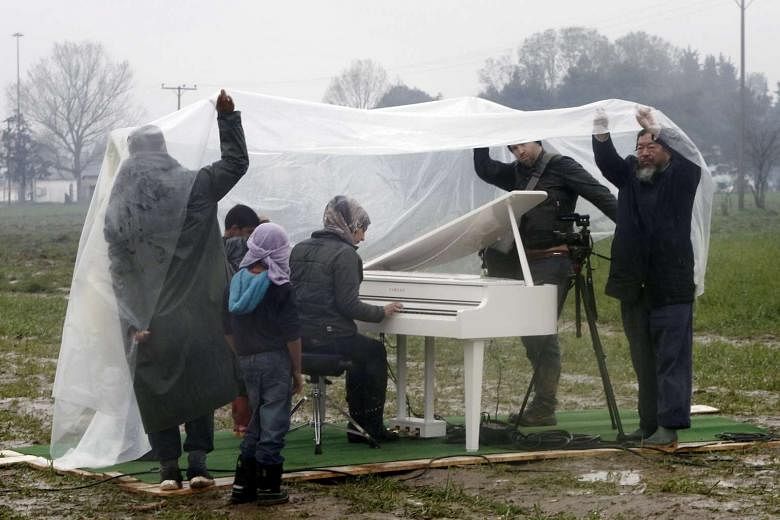REVIEW / CONCERT
BEETHOVEN LAST YEARS
Tang Tee Khoon Grand Series
Esplanade Recital Studio
Last Saturday
Other than the regular airing of his Choral Symphony, Ludwig van Beethoven's late works are hardly ever performed in Singapore. His visionary musical ideas and profundity of thought make these utterances demanding for both performers and audiences alike.
But trust Singaporean violinist Tang Tee Khoon to bring together musical colleagues from around the world and devote two concerts for this just cause.
Despite steep ticket prices, a full house attended the second night, which opened with Beethoven's two Cello Sonatas Op. 102. These are comparatively compact works that encompass a wealth of emotion within economical time spans and British cellist Colin Carr and American pianist Thomas Sauer were on the same wavelength throughout.
From the opening solo in the C-major Sonata, the singing voice of Carr's cello shone like an illuminating source. Never forced or strained, his warmth of tone was a distinguishing feature. Together with Sauer's steadfast and never overpowering partnership, the music soared through Allegro Vivace sections of both movements like a sabre through butter.
After the abrupt and dramatic start to the D-major Sonata, the Adagio slow movement breathed with the long, heavy air of an elegy, which like most good things passed all too soon.
The busy finale was balanced on a knife's edge with its fugue of scalic runs from both instruments. Like in his late piano sonatas, Beethoven's penchant for counterpoint was a conscious salute to Bach and it was with this glorious fugal flourish that the first half concluded.
Tang, who plays on the National Arts Council's 1750 J.B. Guadagnini violin, appeared in the second half with Yuki Kasai (2nd violin, Japan), Jessica Thompson (viola, the United States) and Olivia Jeremias (cello, Germany) for Beethoven's String Quartet In E Flat Major Op. 127. Like his other works in the same key, the opening chord was robust and purposeful and the chemistry among the four women in the stirring music became immediately palpable.
The foursome achieved a fine balance. The quiet beginning of the sublime second movement was a case in point: Each individual voice came in clearly and without clamour for limelight - cello, followed by viola, second violin and first violin in that order.
In the ensuing variations, it was Tang's exquisite solos and leadership that lit the way. Yet hers was an intimately wielded authority, to which the group responded with seeming telepathy and utmost musicality.
The light-hearted scherzo jaunted with the sprightliest of pizzicatos, before giving way to an even more animated central section. The finale, which began at an unhurried pace, again exhibited all the qualities that make great chamber music-making, with all four listening intently, reacting and gelling as one. As the tempo quickened towards its final pages, the more acutely these qualities became apparent.
The secrets of late Beethoven were laid bare and lapped up by the most attentive and receptive of audiences. The Tang Tee Khoon Grand Series returns on Dec 2 and 4 with the works of the young Beethoven. On the strength of this latest showing, it should not be missed.

